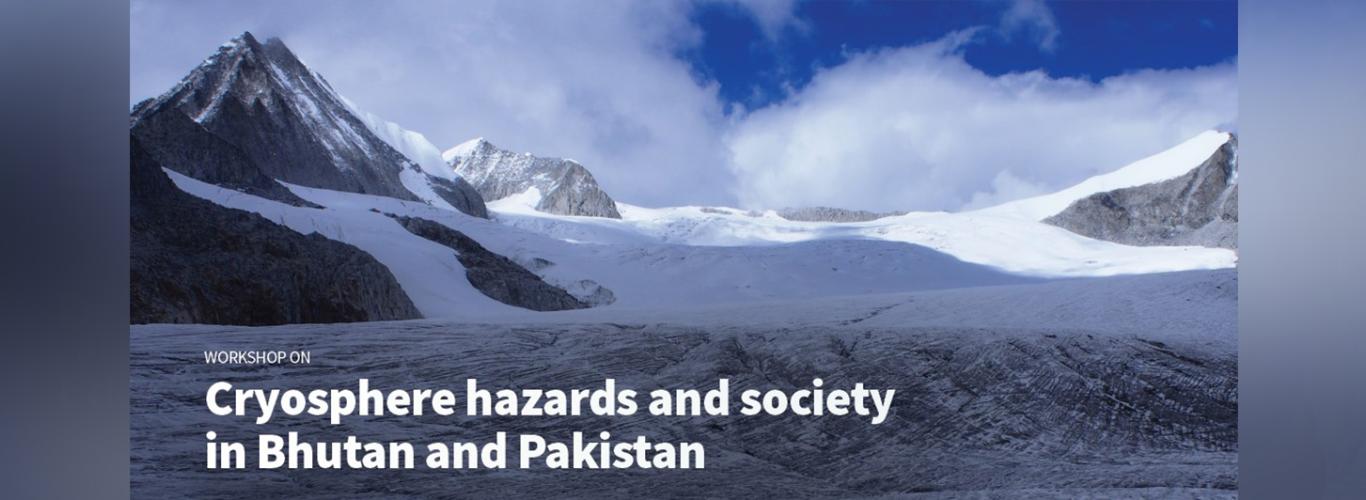Cryosphere Hazards Discussed at Workshop
The Upper Indus Basin is one of the most vulnerable basins when it comes to water and ice as a resource, and has witnessed many hydrosphere-related disasters, including glacial lake outburst floods, debris flows, and landslides, as well as rapid erosion and sedimentation. To review the work of stakeholders in these areas in Bhutan and Pakistan, a workshop was held at LUMS on March 28-29.
Organised in collaboration with the International Centre for Integrated Mountain Development (ICIMOD), a regional intergovernmental learning and knowledge sharing centre serving the eight regional member countries of the Hindu Kush Himalayas (HKH) — that include Afghanistan, Bangladesh, Bhutan, China, India, Myanmar, Nepal, and Pakistan — and the Himalayan University Consortium (HUC), a collaborative network of universities and academic institutions from the HKH.
During this workshop, the HUC Thematic Working Group (TWG) on Cryosphere and Society presented their work, including an introduction to modelling and field methods, and the potential for upscaling. The TWG also shared ongoing work in Bhutan and the Upper Indus basin on climate change impacts on livelihoods, ecosystems, hydrosphere, and cryosphere.
LUMS Vice Chancellor, Dr. Arshad Ahmad, recalled his recent trip to Skardu and the alarming realities he observed. “I echo the growing concern of receding glaciers and the accelerated warming of the Himalayan region. Few people know that over 200 million people live in the Himalayan region and about 2 billion people rely on the rivers that flow from this mountainous area. Freshwater from the cryosphere is essential to sustain us, and water-related issues are one of the most important challenges facing our planet and humanity.”
Several areas of collaboration were identified at the workshop, as well as discussions that centred around how HUC can act as a bridge between all collaborators.
Dr. Ahmad shared how LUMS too is part of local partnerships that focus on hydrology, energy and life sciences. “Our growing partnership with the University of Baltistan has resulted in our respective teams co-designing and co-teaching 5 courses. These courses will be offered to 300 students in Skardu this coming July, with half of those students coming from each institution. What is unique about these courses is that they are primarily field-based, involving real-time data collection from local communities. This data will feed research questions addressing an evolving curriculum that has a direct impact on local communities.”
Dr. Abubakr, Director, Centre for Water Informatics & Technology (WIT) at LUMS, spoke about the growing interest of the Centre in the cryosphere, high mountain agriculture, and other areas related to water and society. “Many of these research initiatives coincide with curricular innovations and strategic partnerships with institutes and organisations in the HKH region. WIT has been running a snowpack monitoring network in Swat for the past 3 years, collecting important data related to snowfall, snowmelt, rainfall, and flash floods in the Swat River basin.”
He also shared that the instruments used in this monitoring network have been developed indigenously at LUMS and have been maintained by the University's alumni and local partners in Swat. “WIT also acquired the ability to monitor snowfall levels for mountainous catchment areas using satellite remote sensing technologies. Finally, we have developed a strong team of postdoctoral fellows, graduate students, and junior researchers that are contributing to these initiatives. Organisations such as ICIMOD and HUC are ideal partners to help strengthen our linkages in the future, especially with universities outside of Pakistan and with local communities in the HKH region."
The moderator, Ms. Amina Maharjan, Senior Specialist Livelihoods and Migration Group Lead, ICIMOD, urged all the attendees to join the cryosphere society. She added, “We began with providing universities in the region a platform to jointly work on common topics - on principles of gender, diversity, transdisciplinarity. We have now 85 plus universities as part of this network. Through this platform, we try to bring the physical and social sciences together - science and community.”





